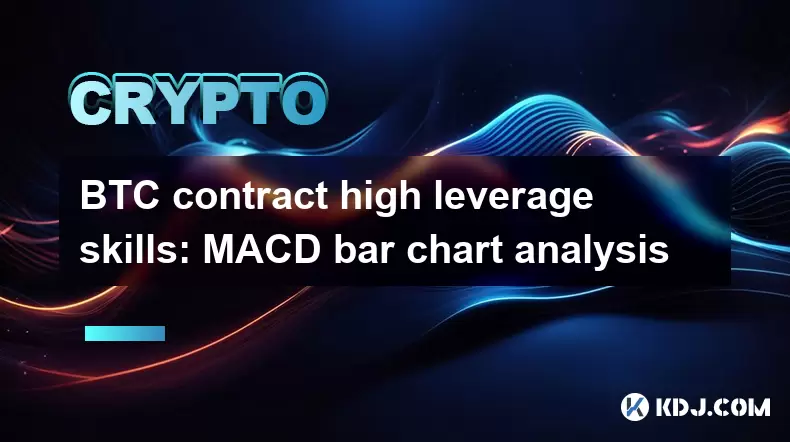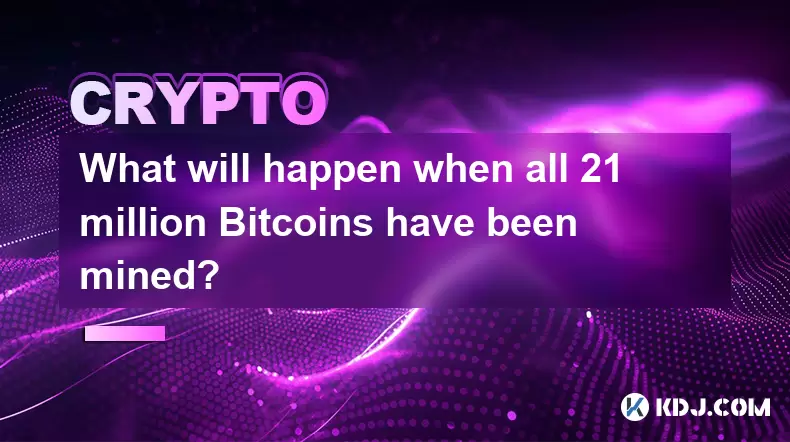-
 Bitcoin
Bitcoin $112400
-1.07% -
 Ethereum
Ethereum $3409
-3.27% -
 XRP
XRP $2.784
-6.60% -
 Tether USDt
Tether USDt $0.9997
-0.03% -
 BNB
BNB $739.3
-2.09% -
 Solana
Solana $158.0
-2.90% -
 USDC
USDC $0.9998
-0.02% -
 TRON
TRON $0.3213
-0.94% -
 Dogecoin
Dogecoin $0.1929
-5.01% -
 Cardano
Cardano $0.6974
-2.82% -
 Hyperliquid
Hyperliquid $36.69
-2.31% -
 Sui
Sui $3.327
-4.80% -
 Stellar
Stellar $0.3672
-5.18% -
 Chainlink
Chainlink $15.65
-3.07% -
 Bitcoin Cash
Bitcoin Cash $525.0
-1.68% -
 Hedera
Hedera $0.2291
-6.00% -
 Avalanche
Avalanche $20.91
-2.96% -
 Ethena USDe
Ethena USDe $1.000
0.00% -
 Toncoin
Toncoin $3.520
-1.12% -
 UNUS SED LEO
UNUS SED LEO $8.968
0.14% -
 Litecoin
Litecoin $105.7
0.26% -
 Shiba Inu
Shiba Inu $0.00001181
-1.79% -
 Polkadot
Polkadot $3.492
-2.08% -
 Uniswap
Uniswap $8.800
-3.10% -
 Dai
Dai $0.9999
-0.01% -
 Monero
Monero $289.9
-3.17% -
 Bitget Token
Bitget Token $4.243
-1.27% -
 Pepe
Pepe $0.00001006
-3.67% -
 Cronos
Cronos $0.1248
-5.68% -
 Aave
Aave $249.7
-2.50%
BTC contract high leverage skills: MACD bar chart analysis
Use MACD bar chart analysis to enhance BTC contract trading with high leverage, identifying bullish and bearish trends for informed decisions.
Jun 12, 2025 at 02:49 pm

BTC contract high leverage skills: MACD bar chart analysis
Trading Bitcoin (BTC) contracts with high leverage can be an exciting yet risky endeavor. Leveraging the Moving Average Convergence Divergence (MACD) bar chart analysis can significantly enhance your trading strategies, helping you make informed decisions and potentially increase your profits. This article will delve into the intricacies of using MACD bar charts for high-leverage BTC contract trading, providing you with a comprehensive guide to master this skill.
Understanding MACD and Its Components
The MACD is a momentum indicator that shows the relationship between two moving averages of a security's price. It is composed of three main components:
- MACD Line: This is the difference between the 12-period and 26-period exponential moving averages (EMA).
- Signal Line: A 9-period EMA of the MACD line.
- Histogram: The difference between the MACD line and the signal line.
The MACD bar chart visualizes these components, making it easier to identify potential buy and sell signals. By understanding how these elements interact, traders can better predict market trends and make more strategic trades.
Setting Up Your Trading Platform for MACD Analysis
To effectively use MACD bar charts for trading BTC contracts, you need to set up your trading platform correctly. Here are the steps to follow:
- Choose a Reliable Trading Platform: Ensure that the platform you use supports high-leverage trading and has a robust charting tool.
- Add MACD Indicator: Navigate to the indicators section and add the MACD indicator to your chart. Most platforms allow you to customize the periods for the MACD line and signal line.
- Adjust Settings: Set the MACD line to 12 periods, the signal line to 9 periods, and the slow line to 26 periods. These are standard settings, but you can adjust them based on your trading strategy.
- Display the Histogram: Ensure the histogram is visible on your chart as it provides valuable insights into the momentum of the price movement.
Interpreting MACD Bar Chart Signals
Interpreting the MACD bar chart involves understanding the signals it generates. Here are the key signals to look for:
- Bullish Crossover: When the MACD line crosses above the signal line, it indicates a potential bullish trend. This is often seen as a buy signal.
- Bearish Crossover: When the MACD line crosses below the signal line, it suggests a potential bearish trend. This is typically considered a sell signal.
- Divergence: If the price of BTC is making new highs while the MACD is failing to reach new highs, it indicates a bearish divergence. Conversely, if the price is making new lows while the MACD is not, it suggests a bullish divergence.
- Histogram Analysis: The histogram's height and direction can provide additional insights. An increasing histogram indicates strengthening momentum, while a decreasing histogram suggests weakening momentum.
Applying MACD Bar Chart Analysis to High-Leverage BTC Contracts
When trading BTC contracts with high leverage, using the MACD bar chart can help you manage risks and capitalize on market movements. Here’s how to apply the analysis:
- Identify Entry Points: Use bullish crossovers and bullish divergences as signals to enter long positions. For short positions, look for bearish crossovers and bearish divergences.
- Set Stop-Loss Orders: Always set stop-loss orders to manage your risk. Place them just below the most recent low for long positions and just above the most recent high for short positions.
- Monitor the Histogram: Keep an eye on the histogram to gauge the strength of the trend. If the histogram starts to decrease after a bullish crossover, it might be a sign to take profits or tighten your stop-loss.
- Combine with Other Indicators: While the MACD is powerful, combining it with other indicators such as the Relative Strength Index (RSI) or Bollinger Bands can provide more robust trading signals.
Practical Example of MACD Bar Chart Analysis
Let’s walk through a practical example of using the MACD bar chart for trading BTC contracts with high leverage:
- Step 1: Open your trading platform and set up the MACD indicator on the BTC chart with the standard settings.
- Step 2: Observe the chart and look for a bullish crossover. Suppose you see the MACD line crossing above the signal line while the histogram starts to increase.
- Step 3: Enter a long position on the BTC contract with high leverage. For example, if you have a leverage of 10x, your position size will be ten times your initial investment.
- Step 4: Set a stop-loss order just below the recent low to manage your risk.
- Step 5: Monitor the histogram and the price movement. If the histogram continues to increase, it indicates strong bullish momentum. If it starts to decrease, consider taking profits or tightening your stop-loss.
- Step 6: If the price reaches your target or you see a bearish crossover, exit the position to lock in profits or minimize losses.
Fine-Tuning Your MACD Strategy
Fine-tuning your MACD strategy involves experimenting with different settings and combining it with other technical analysis tools. Here are some tips:
- Experiment with Periods: Adjust the periods for the MACD line and signal line to find the settings that work best for your trading style.
- Use Multiple Timeframes: Analyze the MACD on different timeframes (e.g., 1-hour, 4-hour, daily) to get a comprehensive view of the market.
- Combine with Price Action: Use the MACD in conjunction with price action analysis, such as support and resistance levels, to confirm your trading signals.
- Backtest Your Strategy: Before applying your strategy to live trading, backtest it using historical data to ensure its effectiveness.
Frequently Asked Questions
Q1: Can the MACD bar chart be used effectively for all cryptocurrencies, or is it specifically suited for BTC?
A1: The MACD bar chart can be used effectively for analyzing any cryptocurrency, not just BTC. However, the effectiveness of the MACD may vary depending on the volatility and trading volume of the specific cryptocurrency. For highly volatile altcoins, you might need to adjust the MACD settings to better suit their price movements.
Q2: How does high leverage affect the risk and reward when using the MACD bar chart for trading?
A2: High leverage amplifies both the potential rewards and risks of trading. When using the MACD bar chart, high leverage can lead to larger profits if your trades are successful, but it can also result in significant losses if the market moves against you. It's crucial to use stop-loss orders and manage your risk carefully when trading with high leverage.
Q3: Are there any specific times of the day when the MACD bar chart analysis is more effective for BTC trading?
A3: The effectiveness of the MACD bar chart analysis can vary depending on market conditions and trading volume. Generally, the MACD may be more effective during times of high trading volume, such as during the overlap of major market sessions (e.g., when both the New York and London markets are open). However, it's important to test and adapt your strategy to different times of the day to find what works best for you.
Q4: How can I avoid false signals when using the MACD bar chart for BTC contract trading?
A4: To avoid false signals, consider the following strategies:
- Confirm with Other Indicators: Use other technical indicators like the RSI or Bollinger Bands to confirm the signals provided by the MACD.
- Wait for Confirmation: Instead of entering a trade immediately after a crossover, wait for the price to confirm the signal by breaking through a key support or resistance level.
- Use Longer Timeframes: Analyzing the MACD on longer timeframes can help filter out short-term noise and provide more reliable signals.
Disclaimer:info@kdj.com
The information provided is not trading advice. kdj.com does not assume any responsibility for any investments made based on the information provided in this article. Cryptocurrencies are highly volatile and it is highly recommended that you invest with caution after thorough research!
If you believe that the content used on this website infringes your copyright, please contact us immediately (info@kdj.com) and we will delete it promptly.
- Bitcoin Liquidity, Osmosis Zone, and Investor Interest: A Deep Dive
- 2025-08-03 15:16:44
- Web3, Sports, and Computing Power: A New Ballgame
- 2025-08-03 15:16:44
- Ethereum, Altcoin Surge, and the MAGACOIN Presale: What's the Buzz?
- 2025-08-03 15:16:44
- Crypto Whales, Meme Coins, and Moonshots: Navigating the Wild West of 2025
- 2025-08-03 15:16:44
- Hong Kong Stablecoin Licenses: A Tight Squeeze?
- 2025-08-03 15:16:45
- Dogecoin's Bullish Signals: Engulfing Candle and Whale Accumulation Point to Potential Surge
- 2025-08-03 15:16:45
Related knowledge

What is the difference between holding Bitcoin on an exchange versus in a personal wallet?
Aug 02,2025 at 03:15pm
Understanding Custodial vs Non-Custodial ControlWhen holding Bitcoin on an exchange, users are essentially entrusting their assets to a third party. E...

What are the biggest security risks associated with holding Bitcoin?
Aug 03,2025 at 03:16pm
Exposure to Private Key CompromiseOne of the most critical security risks when holding Bitcoin is the compromise of private keys. These cryptographic ...

Can governments shut down or ban Bitcoin?
Aug 02,2025 at 09:44am
Understanding Bitcoin’s Decentralized StructureBitcoin operates on a decentralized peer-to-peer network, meaning it is not controlled by any single en...

What will happen when all 21 million Bitcoins have been mined?
Aug 03,2025 at 09:50am
Understanding the 21 Million Bitcoin CapThe 21 million Bitcoin cap is a foundational rule embedded in Bitcoin’s source code, designed by Satoshi Nakam...

What are Bitcoin transaction fees, and why do they fluctuate?
Aug 03,2025 at 01:51am
Understanding Bitcoin Transaction FeesBitcoin transaction fees are small amounts of Bitcoin paid by users to miners for processing and confirming tran...

Can the rules of Bitcoin be changed, and who decides on upgrades?
Aug 02,2025 at 06:36am
Understanding Bitcoin's Governance ModelBitcoin operates without a central authority, which means no single entity has the power to unilaterally chang...

What is the difference between holding Bitcoin on an exchange versus in a personal wallet?
Aug 02,2025 at 03:15pm
Understanding Custodial vs Non-Custodial ControlWhen holding Bitcoin on an exchange, users are essentially entrusting their assets to a third party. E...

What are the biggest security risks associated with holding Bitcoin?
Aug 03,2025 at 03:16pm
Exposure to Private Key CompromiseOne of the most critical security risks when holding Bitcoin is the compromise of private keys. These cryptographic ...

Can governments shut down or ban Bitcoin?
Aug 02,2025 at 09:44am
Understanding Bitcoin’s Decentralized StructureBitcoin operates on a decentralized peer-to-peer network, meaning it is not controlled by any single en...

What will happen when all 21 million Bitcoins have been mined?
Aug 03,2025 at 09:50am
Understanding the 21 Million Bitcoin CapThe 21 million Bitcoin cap is a foundational rule embedded in Bitcoin’s source code, designed by Satoshi Nakam...

What are Bitcoin transaction fees, and why do they fluctuate?
Aug 03,2025 at 01:51am
Understanding Bitcoin Transaction FeesBitcoin transaction fees are small amounts of Bitcoin paid by users to miners for processing and confirming tran...

Can the rules of Bitcoin be changed, and who decides on upgrades?
Aug 02,2025 at 06:36am
Understanding Bitcoin's Governance ModelBitcoin operates without a central authority, which means no single entity has the power to unilaterally chang...
See all articles

























































































